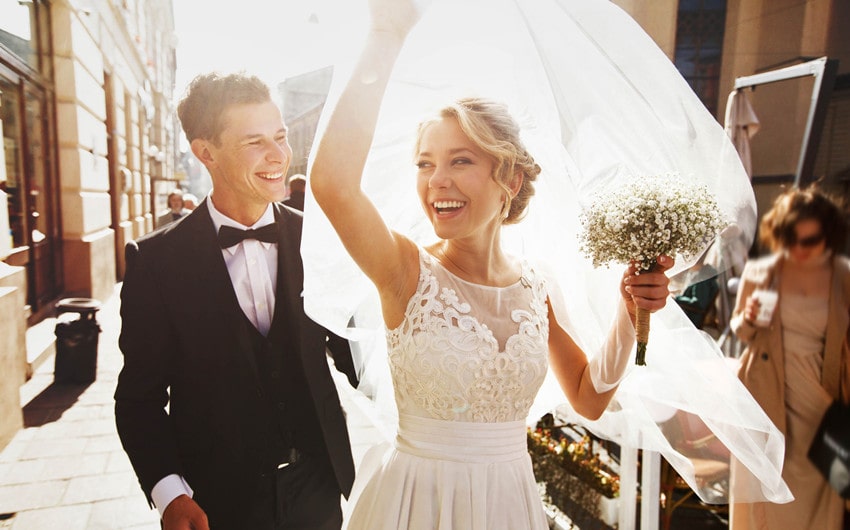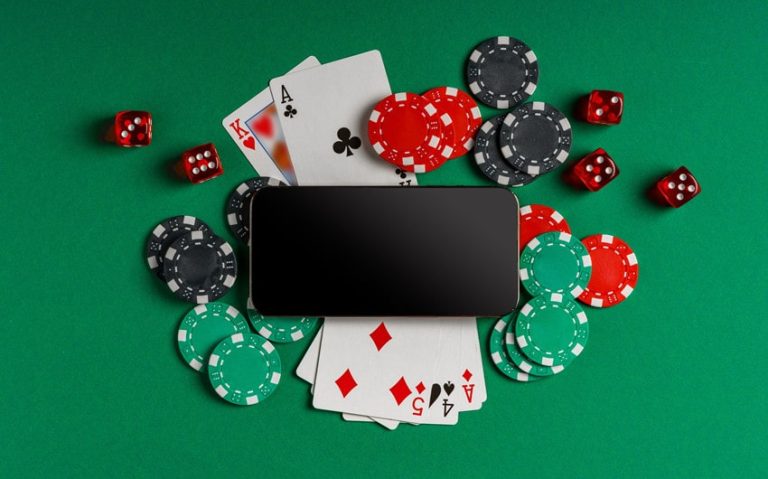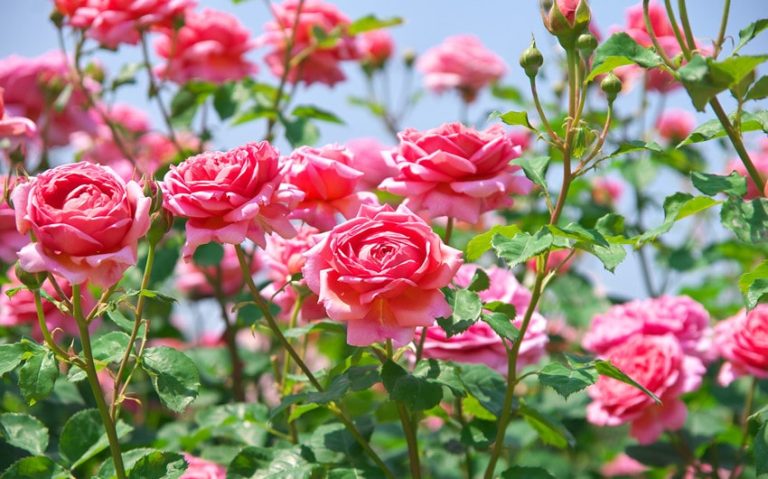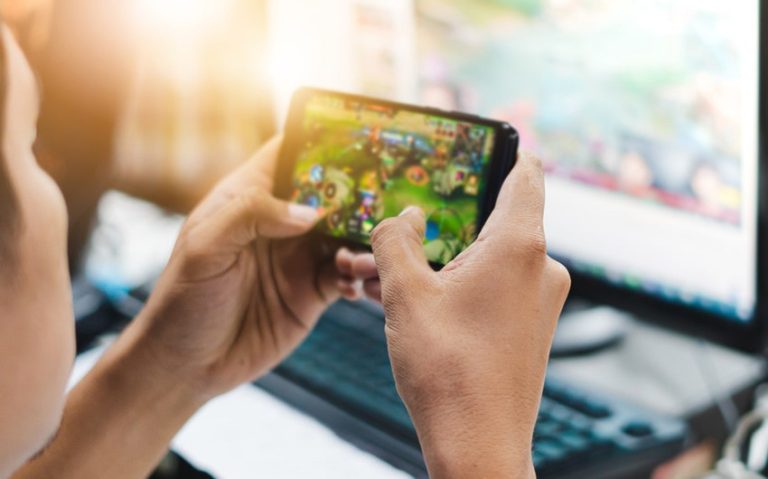Weddings are a universal celebration of love, but the way they are celebrated varies widely across cultures. From the color of the bride’s dress to the rituals performed, each tradition has its own meaning and charm. Curious about how much you know about these global customs?
Dive into our collection of wedding tradition trivia questions and answers to discover fascinating customs that mark this special occasion around the world. Whether you’re planning a wedding or just love to learn, these insights are sure to entertain and enlighten you.
Wedding Tradition Trivia Questions and Answers

Western Traditions Trivia
1. What does a white wedding dress symbolize in Western culture?
Answer: Purity and innocence.
2. Why is it traditional for the bride to wear a veil?
Answer: Historically, it was used to protect the bride from evil spirits.
3. What is the significance of the bride and groom cutting the cake together?
Answer: It symbolizes their first joint task and their shared future.
4. Why do couples exchange rings during the wedding ceremony?
Answer: Rings symbolize eternal love and commitment, as a circle has no beginning or end.
5. What is the origin of having bridesmaids and groomsmen?
Answer: They were originally intended to confuse evil spirits or those who wished to harm the bride or groom.
6. Why is it considered bad luck for the groom to see the bride in her wedding dress before the ceremony?
Answer: This superstition dates back to the time of arranged marriages, where it was feared the groom might back out if he saw the bride beforehand.
7. What does throwing rice at a newly married couple symbolize?
Answer: Rice is a symbol of fertility and prosperity.
8. What is the purpose of a bridal bouquet?
Answer: Historically, it contained herbs and flowers meant to ward off evil spirits.
9. Why do many brides carry ‘something old, something new, something borrowed, something blue’?
Answer: Each item offers good luck; for instance, something old connects the bride to her past, while something new looks forward to the future.
10. What does the ‘something blue’ in a bridal outfit represent?
Answer: Loyalty and faithfulness.
11. Where did the tradition of a honeymoon originate?
Answer: It began as a period for the couple to hide from the bride’s parents before settling in their new home.
12. What is the significance of the groom carrying the bride over the threshold?
Answer: To protect her from evil spirits lying in wait below the threshold.
13. Why is the wedding ring worn on the fourth finger of the left hand?
Answer: The ancient Romans believed this finger contained a vein that led directly to the heart.
14. What does the term ‘tie the knot’ actually refer to in weddings?
Answer: It originates from an ancient Roman tradition where the bride’s girdle was tied in knots that the groom had to untie.
15. Why do guests clink glasses during wedding toasts?
Answer: To ward off evil spirits with the ring of the glasses.
16. What is the origin of the ‘bridal shower’?
Answer: It originated from a Dutch tradition where if a father disapproved of his daughter’s choice in husband and wouldn’t provide a dowry, friends would bring gifts to compensate.
17. Why are ‘save the date’ cards sent out for weddings?
Answer: To ensure that guests will keep the wedding day free on their calendars.
18. What does the ‘best man’ historically represent in a wedding?
Answer: He was originally the groom’s best swordsman, meant to help defend the bride from kidnappers.
19. Why do some brides toss their bouquet at the wedding?
Answer: It is believed that the woman who catches the bouquet will be the next to marry.
20. What is the purpose of the wedding toast?
Answer: To honor the couple and wish them happiness and prosperity in their life together.
Asian Traditions Trivia
1. What color is traditionally worn by brides in China for good luck?
Answer: Red, as it symbolizes luck, joy, and prosperity.
2. Why do Japanese couples drink sake during their wedding ceremony?
Answer: Sharing sake, known as “san-san-kudo,” symbolizes sealing the bond between the families and the couple.
3. What unique ritual do Korean grooms perform at their wedding to showcase their strength and character?
Answer: The groom demonstrates his strength and resolve by breaking korean walnuts with his feet.
4. In Indian weddings, what is the significance of the ‘Mangalsutra’?
Answer: The Mangalsutra is a sacred necklace that the groom ties around the bride’s neck, symbolizing her marital status and the commitment of the husband to protect her.
5. Why do Filipino couples release doves during their wedding ceremony?
Answer: Releasing doves symbolizes peace, harmony, and a happy start to their life together.
6. What does the Indonesian tradition of washing the groom’s feet by the bride signify?
Answer: This act symbolizes the bride’s respect towards the groom and her promise to serve him as a wife.
7. In Vietnamese culture, what does the tradition of offering tea to ancestors during a wedding ceremony represent?
Answer: It is a way of paying respect to ancestors and receiving their blessings for the marriage.
8. What is the purpose of the Cambodian hair cutting ceremony during weddings?
Answer: It symbolizes a clean start to the couple’s new life together.
9. In Thai weddings, why is a special thread connected to the bride and groom’s heads?
Answer: The thread, part of the ‘Sai Sin’ ritual, symbolizes the couple’s destiny being bound together.
10. Why do some Indian brides wear a toe ring as part of their wedding attire?
Answer: Toe rings are worn as a symbol of the married state by Hindu women.
11. What is the significance of the ‘Saptapadi’ or seven steps in an Indian Hindu wedding?
Answer: Each step represents a vow the couple makes, symbolizing aspects of their future life together.
12. How is the Chinese tea ceremony important in a wedding?
Answer: It is a way for the couple to show respect and gratitude to their parents and elders.
13. What does the Persian wedding tradition of ‘Sofreh Aghd’ involve?
Answer: A ceremonial spread which includes several items symbolizing happiness, prosperity, and fertility for the couple.
14. Why do Japanese brides often wear a white kimono called ‘Shiromuku’ at their wedding?
Answer: The white kimono represents purity and the willingness to color the bride’s future with the groom’s family’s standards.
15. In a traditional Bhutanese wedding, what does the ceremony of ‘Zhugdrey Phunsum Tshogpa’ involve?
Answer: It involves the bride and groom exchanging colored scarves, symbolizing their marriage bond.
16. Why do Mongolian couples seek a specific auspicious date from a monk or a fortune teller for their wedding?
Answer: They believe choosing an auspicious date ensures a successful and harmonious marriage.
17. What does the Korean ‘Pyebaek’ ceremony involve?
Answer: It’s a post-wedding ritual where the couple pays respect to the groom’s family, symbolizing the joining of the bride into the groom’s family.
18. In Nepalese weddings, why is the bride’s forehead marked with ‘Sindhur’?
Answer: Sindhur signifies the woman’s status as married and invokes a commitment from her.
19. What is unique about a traditional Malaysian wedding outfit for brides?
Answer: It is often lavishly embroidered and includes a headdress that complements the outfit.
20. In Sri Lankan wedding tradition, what does the ‘Poruwa’ ceremony involve?
Answer: The bride and groom stand on an ornate wooden platform, symbolizing their new life together.
Indian Traditions Trivia
1. What is the significance of the ‘Mangalsutra’ in Indian weddings?
Answer: The Mangalsutra is a sacred necklace that the groom ties around the bride’s neck, symbolizing her marital status and the lifelong commitment of the husband to protect her.
2. Why do Indian brides wear a red sari or lehenga on their wedding day?
Answer: Red is considered a symbol of prosperity, fertility, and marital bliss in Indian culture.
3. What does the ritual ‘Saptapadi’ or seven steps involve?
Answer: The bride and groom take seven steps together around the sacred fire, each step representing a marital vow for their life together.
4. Why is turmeric paste applied to both the bride and groom before the wedding in a ceremony known as ‘Haldi’?
Answer: Turmeric is believed to have purifying and beautification properties, and it also wards off evil spirits.
5. What is the significance of the ‘Mehndi’ ceremony in Indian weddings?
Answer: Mehndi (henna) is applied to the bride’s hands and feet in intricate patterns, symbolizing joy, beauty, and spiritual awakening.
6. Why do Indian weddings often feature a ‘Baraat’, or groom’s procession?
Answer: This vibrant procession symbolizes the groom’s journey to the bride’s house or the wedding venue, celebrating his joy at taking the bride into his life.
7. What is exchanged during the ‘Jaimala’ or garland exchange ceremony?
Answer: The bride and groom exchange floral garlands, symbolizing their acceptance of each other.
8. Why are toe rings an important accessory for married women in India?
Answer: Toe rings signify the married status of Hindu women and are also associated with fertility.
9. What role does ‘Kanyadaan’ play in an Indian wedding?
Answer: It involves the bride’s father giving away his daughter to the groom, symbolizing the transfer of responsibility.
10. What is the purpose of the ‘Vidaai’ ceremony?
Answer: This ceremony marks the bride’s farewell to her family and her transition to her new home, often filled with emotional goodbyes.
11. Why do Indian couples take the ‘Mangal Pheras’ around the fire?
Answer: Circling the fire signifies the binding of the couple in marriage, as fire is considered a witness to the vows they take.
12. What does the ‘Bidaai’ involve?
Answer: It’s the bride’s departure from her parental home, often marked by throwing back puffed rice over her head, symbolizing wealth and prosperity that she brings to her husband’s home.
13. Why is the ‘Solah Shringar’ important for an Indian bride?
Answer: It consists of sixteen adornments that a bride wears, each piece symbolic of her marital status and enhancing her beauty.
14. What is the ‘Chooda’ ceremony?
Answer: In some North Indian communities, the bride wears a set of red and white bangles gifted by her maternal uncle, symbolizing luck and prosperity.
15. Why is a coconut used during many Indian wedding ceremonies?
Answer: The coconut is considered a symbol of prosperity and is used in various rituals to signify blessings from the divine.
16. What does the application of ‘Sindoor’ signify for an Indian bride?
Answer: Sindoor, a vermilion red powder applied in the parting of the bride’s hair, signifies her married status and her husband’s long life.
17. How does the ‘Kalire’ ceremony connect the bride to her friends?
Answer: Small ornaments hanging from the bride’s bangles are tapped over unmarried friends’ heads, predicting who will marry next.
18. What significance does the groom’s shoe-stealing by the bride’s sisters hold?
Answer: Known as ‘Joota Chupai’, it is a playful ritual where the bride’s sisters steal and hide the groom’s shoes and demand a ransom for their return, symbolizing the light-hearted rivalry between the families.
19. Why is the groom given a ‘Sehra’ on his wedding day?
Answer: The Sehra, a veil of flowers or beads worn on the head, is meant to protect him from evil eye and also adds to his regal appearance.
20. What is the ‘Aeki Beki’ ceremony?
Answer: A fun game where a ring and several coins are placed in a bowl of milk mixed with vermillion and the bride and groom have to find the ring, symbolizing who will have the upper hand in the marriage.
European Traditions Trivia
1. What does a white wedding dress symbolize in European culture?
Answer: Purity and innocence, a tradition popularized by Queen Victoria in the 19th century.
2. Why do British couples traditionally save the top layer of their wedding cake?
Answer: To be used at the christening of their first child or to celebrate their first anniversary.
3. What is the significance of the ‘something old, something new’ tradition in the UK?
Answer: It brings the bride good luck, protection for future children, happiness, and prosperity.
4. Why do Swedish brides put silver coins from their fathers and gold coins from their mothers in their shoes?
Answer: To ensure that they never go without.
5. What unique wedding tradition involves the bride and groom sawing a log in Germany?
Answer: It’s called “Baumstamm sägen” – sawing a log represents the first tough challenge the couple will overcome together.
6. In France, what is a traditional wedding receptacle from which the bride and groom drink?
Answer: A two-handled cup, often an heirloom, called a “Coupe de Mariage.”
7. What traditional role does the ‘Best Man’ have in Norwegian weddings?
Answer: To protect the bride, including physically guarding the entrance to the wedding tent.
8. Why do some Spanish brides wear black dresses?
Answer: To symbolize ‘until death do us part,’ showcasing their commitment and devotion.
9. In Italy, why is it lucky for the groom to carry a small piece of iron in his pocket?
Answer: To ward off evil spirits.
10. What is the traditional wedding gift for Greek couples from their guests?
Answer: Money, often pinned to the bride’s dress during the reception dance.
11. Why do Russian couples share a wedding sweetbread called “karavay”?
Answer: It symbolizes prosperity and is shared to symbolize the sweetness of their future life together.
12. What does breaking a plate during a Polish wedding reception signify?
Answer: It wards off evil spirits and symbolizes the couple’s new beginning.
13. Why is “kidnapping” the bride a fun tradition in some parts of Eastern Europe, like Romania?
Answer: It’s a playful custom where the groom must pay a “ransom” to get his bride back, demonstrating his love and dedication.
14. What does the Danish bride and groom traditionally do to avoid being ‘evil-eyed’?
Answer: They cross-dress to confuse evil spirits.
15. Why do Dutch brides carry a purse at their wedding?
Answer: To collect gifts of money from the guests.
16. In Irish tradition, why is the wedding ring called a ‘Claddagh’?
Answer: It represents love (heart), loyalty (crown), and friendship (hands).
17. What is the significance of the bride’s veil in traditional Eastern Orthodox ceremonies?
Answer: It protects against evil spirits and symbolizes purity.
18. Why do Finnish brides traditionally go door-to-door collecting gifts in a pillowcase?
Answer: Accompanied by an older married man who represents long marriage, it’s a way to wish luck.
19. What is the meaning behind the traditional Scottish ‘pinning of the tartan’?
Answer: It symbolizes the bride’s acceptance into the groom’s family.
20. Why do some Balkan brides throw apples over their new homes?
Answer: To ensure fertility and prosperity in their marital home.
African Traditions Trivia
1. What does the “jumping the broom” ceremony symbolize in some African and African-American weddings?
Answer: It symbolizes sweeping away the old and welcoming the new, representing the couple’s entrance into a new life together.
2. Why do some South African brides change their outfits multiple times during their wedding day?
Answer: To display their beauty and family wealth, and also to express their multifaceted personalities.
3. In Nigerian culture, what does the tradition of spraying money on the bride and groom during the dance signify?
Answer: It symbolizes showering the couple with happiness, good fortune, and prosperity.
4. What is the significance of the kola nut in West African weddings, particularly in Nigeria and Ghana?
Answer: The kola nut symbolizes the couple’s willingness to help heal any issues that may arise in their community, showing unity and purpose.
5. Why do Maasai brides shave their heads before marriage?
Answer: It signifies purity and beauty, marking the transition from a single woman to a married woman.
6. In Moroccan weddings, why is the bride ceremonially bathed in milk?
Answer: The milk bath is believed to purify the bride, preparing her for her new life.
7. What is the “Lobola” ceremony in Southern Africa, and what does it involve?
Answer: Lobola is a bride price negotiation and payment, signifying commitment and respect towards the bride’s family.
8. What does the “Guérewol” festival involve, notable among the Wodaabe Fula people of Niger?
Answer: It’s a traditional courtship ritual that includes young men dressed in elaborate ornaments and makeup to impress marriageable women.
9. Why are beads so significant in many African wedding traditions?
Answer: Beads symbolize beauty, tradition, culture, and sometimes the status of the bride or groom within the community.
10. In Ethiopian weddings, what does the “melse” ceremony involve?
Answer: The melse is the second-day celebration where the bride and groom wear traditional Ethiopian clothing and continue the festivities with family and friends.
11. What role does the “Sanga” play in traditional Zulu weddings in South Africa?
Answer: It’s a ritual sacrifice of a cow, which represents the joining of two families and the ancestors’ blessing.
12. How do Egyptian couples traditionally celebrate their engagement?
Answer: With a “Katb Al-Kitaab” ceremony, which is the Islamic marriage ceremony before the actual wedding festivities.
13. Why do Sudanese brides have a unique henna party called “Jirtig”?
Answer: It is believed to bring good luck, fertility, and protection from evil spirits.
14. In Kenyan tradition, why might the bride’s entrance be deliberately blocked by the groom’s family at the wedding?
Answer: It is a playful gesture to test the bride’s commitment and to welcome her into the family.
15. Why do Ghanaian couples have a “knocking” ceremony before their wedding?
Answer: This is when the groom, along with his family, formally knocks on the bride’s family’s door to ask for permission to marry, symbolizing respect and honor.
16. What does the Algerian traditional three-day wedding symbolize?
Answer: Each day represents different stages of life and marriage, encompassing preparation, celebration, and consummation.
17. Why do Swazi grooms present their in-laws with two cows?
Answer: One cow is for the mother-in-law as a thank you for raising his bride, and the other is to ensure that the bride’s spirit is never hungry.
18. In Tanzanian weddings, what is the significance of the bride and groom feeding each other cake?
Answer: It symbolizes their commitment to provide for each other and share their resources.
19. What traditional dance do Cameroonian couples perform at their wedding?
Answer: The “Bikutsi” dance, which involves vigorous movements and steps to celebrate joy and the couple’s future.
20. How do Congolese couples demonstrate their engagement to the community?
Answer: By hosting a large engagement party known as “Lobola,” similar to the Southern African tradition, which includes negotiations over the bride price.
Latin American Traditions Trivia
1. What does the “lazo” symbolize in Mexican weddings?
Answer: The lazo, often a rosary or white rope, is placed around the couple’s shoulders in a figure-eight shape to symbolize their eternal unity.
2. Why do Argentinean couples exchange both engagement rings and wedding rings?
Answer: The engagement ring is given at the proposal, and both partners wear a ring on their right hand until they exchange them for the left hand during the wedding ceremony.
3. What is the significance of the 13 gold coins (“las arras”) in Spanish and Hispanic weddings?
Answer: The coins represent Christ and the 12 apostles, symbolizing the groom’s commitment to support his bride.
4. Why do Brazilian couples write the names of their single friends inside the bride’s shoe?
Answer: It is believed that those whose names are worn off by the end of the night will be the next to marry.
5. What traditional dance is often performed at Cuban weddings?
Answer: The money dance, where guests pin money on the bride’s dress as they dance with her, offering financial blessings.
6. In Colombian weddings, what unique item is placed under the bride’s dress?
Answer: A coin, to bring good luck and ensure the couple’s prosperity.
7. Why is cake not always the dessert at Chilean weddings?
Answer: Often, a dessert called ‘milhojas’ made of layers of pastry, cream, and dulce de leche is served instead of or along with cake.
8. What is the “Serenata” in Venezuelan wedding tradition?
Answer: The groom surprises the bride with a serenade of love songs performed under her window the night before the wedding.
9. How is a Peruvian wedding cake unique in its tradition involving single women?
Answer: Single women pull ribbons attached to charms, one of which is a fake wedding ring, out of the cake; the one who pulls the ring is said to be next to marry.
10. What traditional blessing is given at Guatemalan weddings?
Answer: Parents wrap the couple in a smoke shroud of incense to cleanse them of evil spirits.
11. Why do Dominican Republic brides have a child carry a white bible down the aisle?
Answer: The child, often called an “arras boy,” carries the bible to bless the marriage with divine guidance.
12. In Puerto Rican weddings, what is sprinkled on the bride’s bouquet?
Answer: Amulets and coins to bring good luck and prosperity.
13. What does the traditional Nicaraguan dance at weddings symbolize?
Answer: It represents the colorful and vibrant culture of Nicaragua, often telling a story of love and commitment.
14. What does the groom give the bride during a Bolivian wedding?
Answer: A set of traditional jewelry, often gold, to signify his ability to provide.
15. What is unique about the way wedding invitations are delivered in Ecuador?
Answer: They are traditionally hand-delivered by the couple themselves as a sign of respect and personal touch.
16. Why do many Salvadoran brides choose to wear blue gowns?
Answer: Blue is considered a symbol of purity and connection to the divine, similar to the Virgin Mary.
17. What role do “padrinos” and “madrinas” play in a Mexican wedding?
Answer: They are godparents chosen to mentor the couple and often sponsor parts of the wedding, such as the lazo, rings, and arras.
18. Why are fireworks common at Honduran weddings?
Answer: To celebrate and announce the marriage to the entire community in a vibrant and explosive manner.
19. What is the “Hora Loca” in a Panamanian wedding?
Answer: A “crazy hour” where masked dancers and loud music surprise the guests to energize the party.
20. What does the “Manta de Unity” represent in a Costa Rican wedding?
Answer: A colorful tapestry placed over the couple’s shoulders during the ceremony to symbolize their new unity and life together.







